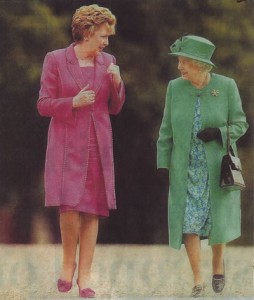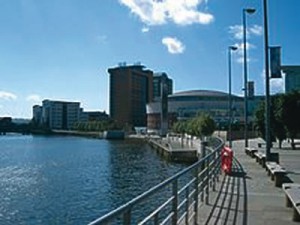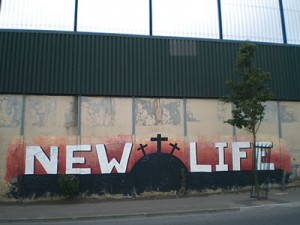A Weekend in Belfast
The Editor finds the ‘Wee North’ full of Hope
On the way back to Dublin on a bus full of sleeping students, we left Newry onto the Motorway and suddenly the bus was surrounded by the flashing lights of police cars. The bus pulled over, and the gardai were on board asking for passports. Most of the students hardly woke as they fished out their IDs. The Gard looked at me but hardly glanced at my ID card. I whispered to the student next to me what was that all about. He sighed ‘probably looking for someone, obviously not you’. It was the only anxious moment I had all weekend.
Friday night in Belfast was much like Friday night in any large NZ city - a buzz in the air and plenty of foot traffic. I was wearing a collar because I knew that the friend meeting me would be – a Vincentian, Adrian Eastwood. As we walked through a shopping mall, a young man saw the collar and called out ‘Hi Padre.’ Every second person seem to know Adrian - not surprising since he is the hospital chaplain. While we were waiting for a seat at a restaurant two men in suits and bright ties greeted Adrian and he introduced me to the Lord Mayor of Belfast, John Conveny. Good grief, I thought, is this a village? The mayoralty is now held by Niall O’Donnghaile, a 25 year old Sinn Fein politician, which shows that the winds of change are blowing.
Northern Ireland has been in the news recently for a good reason - a group of superb golfers who have swept the Major tournaments of the world: Rory McIlroy, Darren Clarke, and Graeme McDowell. All the people can rejoice at this politically neutral achievement.
The Good Friday Accords are holding and a fragile peace has broken out. There have been some severe provocations including the murder of a Catholic policeman this year, but the gunmen no longer rule.
It is sobering to drive through the Falls Road area, just minding your own business. Murals are everywhere mostly of local heroes and political slogans; some of the murals are truly intimidating - a row of photographs with the large caption “These men are guilty of murder”. Real peace will come when those murals can be painted out. Milltown Cemetery is alive with mementos of the struggle. One gravestone read: “This man lived and died for a 32-County Secular Ireland”. I saw the graves of the men killed in the loyalist attack on a republican funeral, caught on TV for the world to see.
There was a rally in progress in the cemetery while we were there. Speeches made, flags waved, but no prayers. We spoke to one of the people as he left and he told us the rally was for those who died in internal republican struggles. Fr Adrian took me to the Irish Cultural Centre in Falls Road, where there was a Book Launch in progress. Everyone was speaking Irish, and the book in question was all in Irish beautifully illustrated. This was a sign of the general revival of interest in Gaelic language and culture.
The peace wall separating the two communities is seen as a positive. While keeping the militants apart, it is a constant reminder of the goal of peace. It is being achieved one step at a time. The Loyalist Associations still insist on their annual Marches which pass some Republican areas, and cause grave offence as they are intended to. They are in the same category as the aggressive Republican murals. They will disappear when the communities have no need of them. It may take several generations.
In terms of Church, Belfast is not the focal point because the Primate has his Cathedral in Armagh. A few years ago, one of my friends from Wellington visited his family in a small town in the North , and went to Mass with his partner’s mother. Entrance was through the presbytery and into the Church under a covered way. All through Mass rocks thudded into the bolted wooden door. That is not common now. Last year I watched an interview of Ian Paisley by veteran TV host Gay Byrne. The old campaigner was almost jovial and talked of his willingness to do the most humble task in Heaven.
The white heat seems to have gone from the sectarian divide. The political solution paved the way for peace on the streets. An important step for peace was taken this year when Queen Elizabeth II visited the Republic of Ireland and met with Belfast-born Catholic Irish President Mary McAleece visiting some historically sensitive places around Dublin. In this four day private visit, these two women probably achieved more than a hundred years of British-Irish diplomacy.
My visit to Belfast was short , and I missed the other Counties, but the people I met were positive. The chances of a lasting peace are growing, and the dream of a united Ireland is not dead. Belfast is a city at the cutting edge of history.


 Entries(RSS)
Entries(RSS)